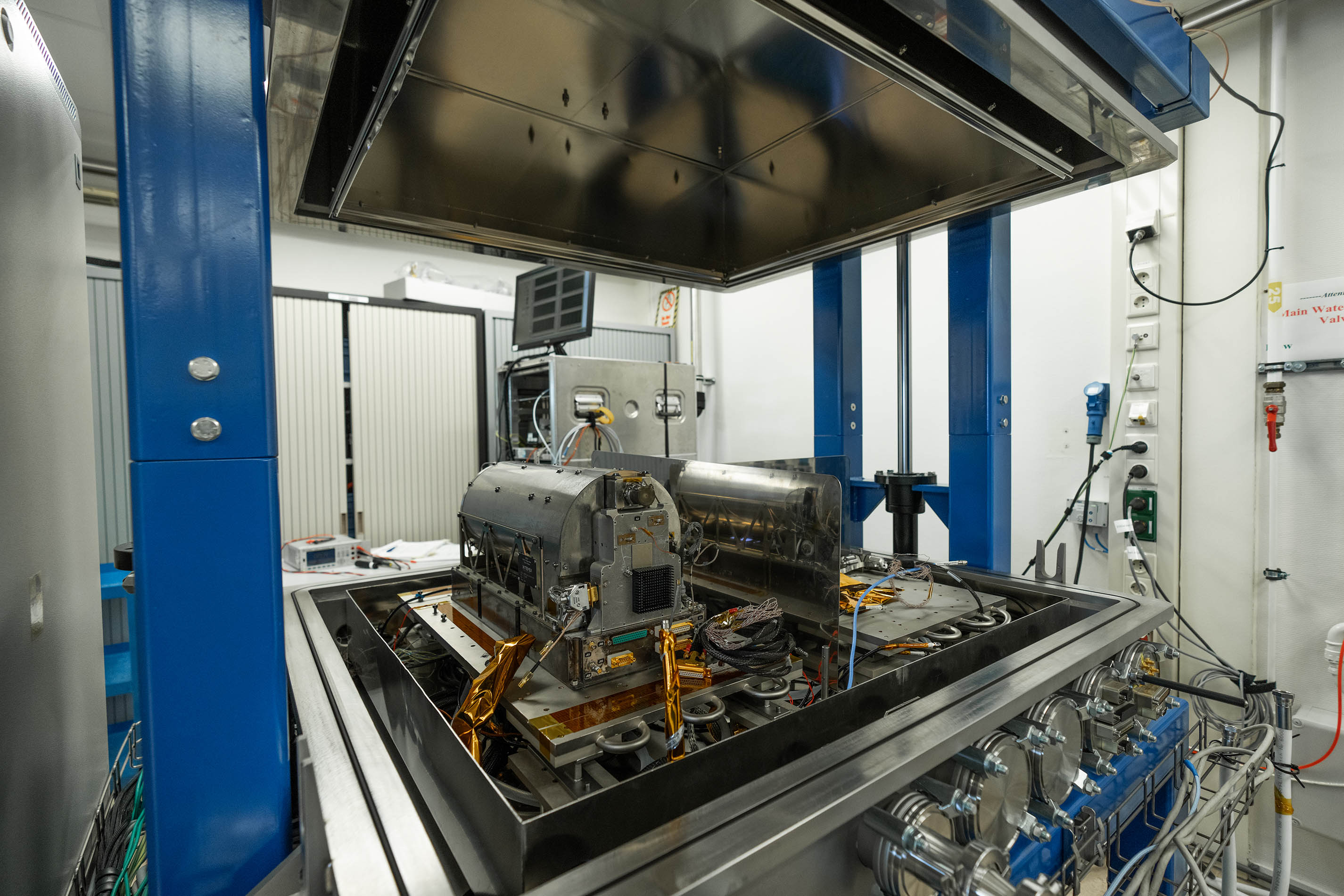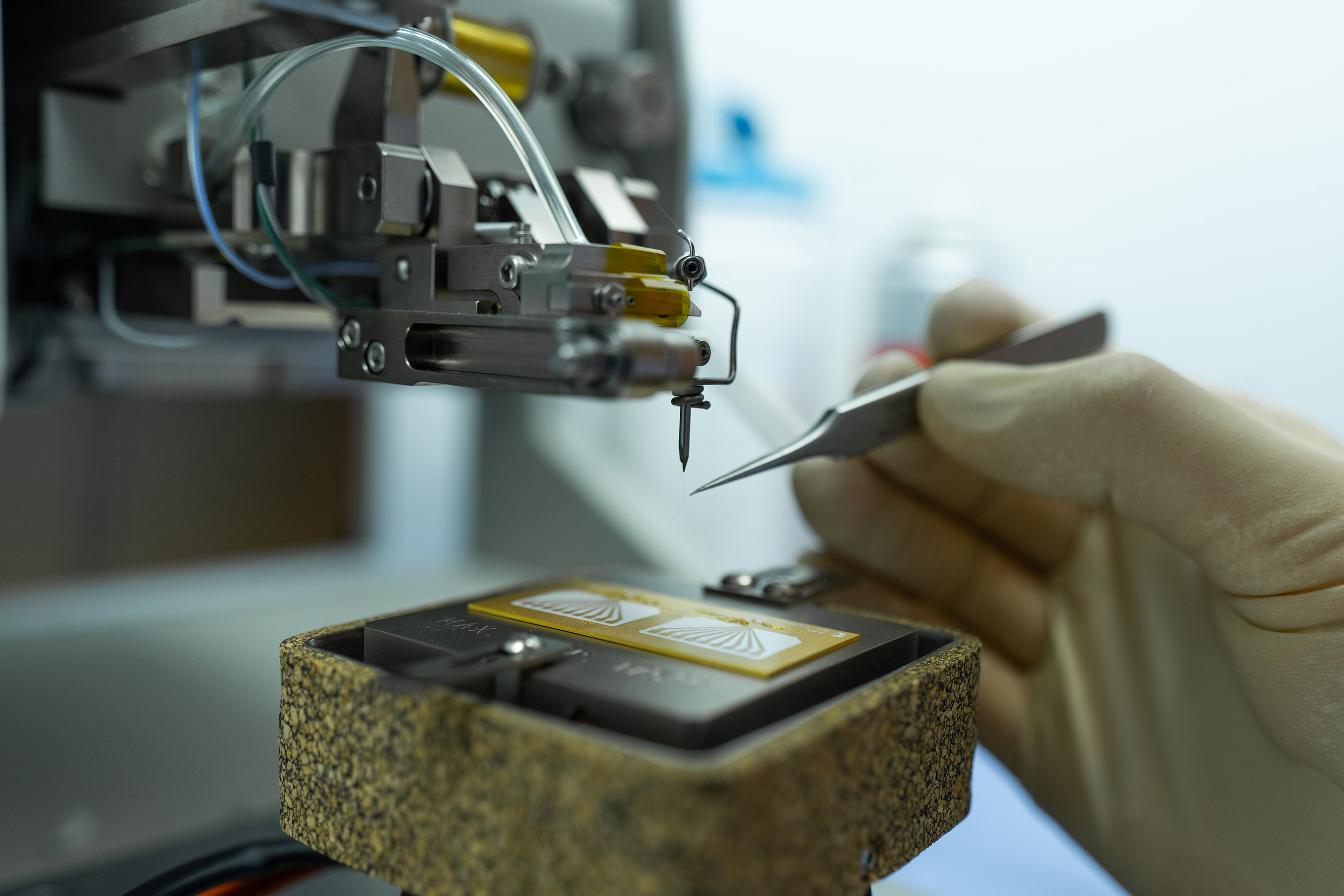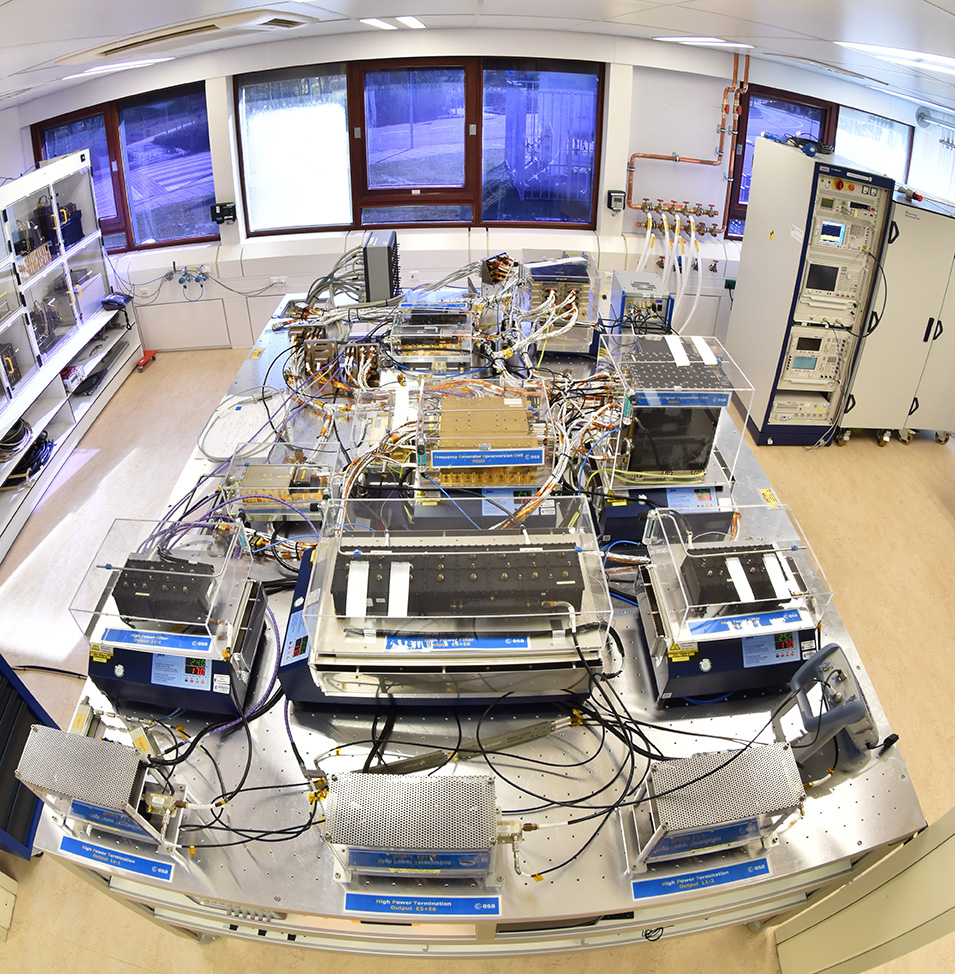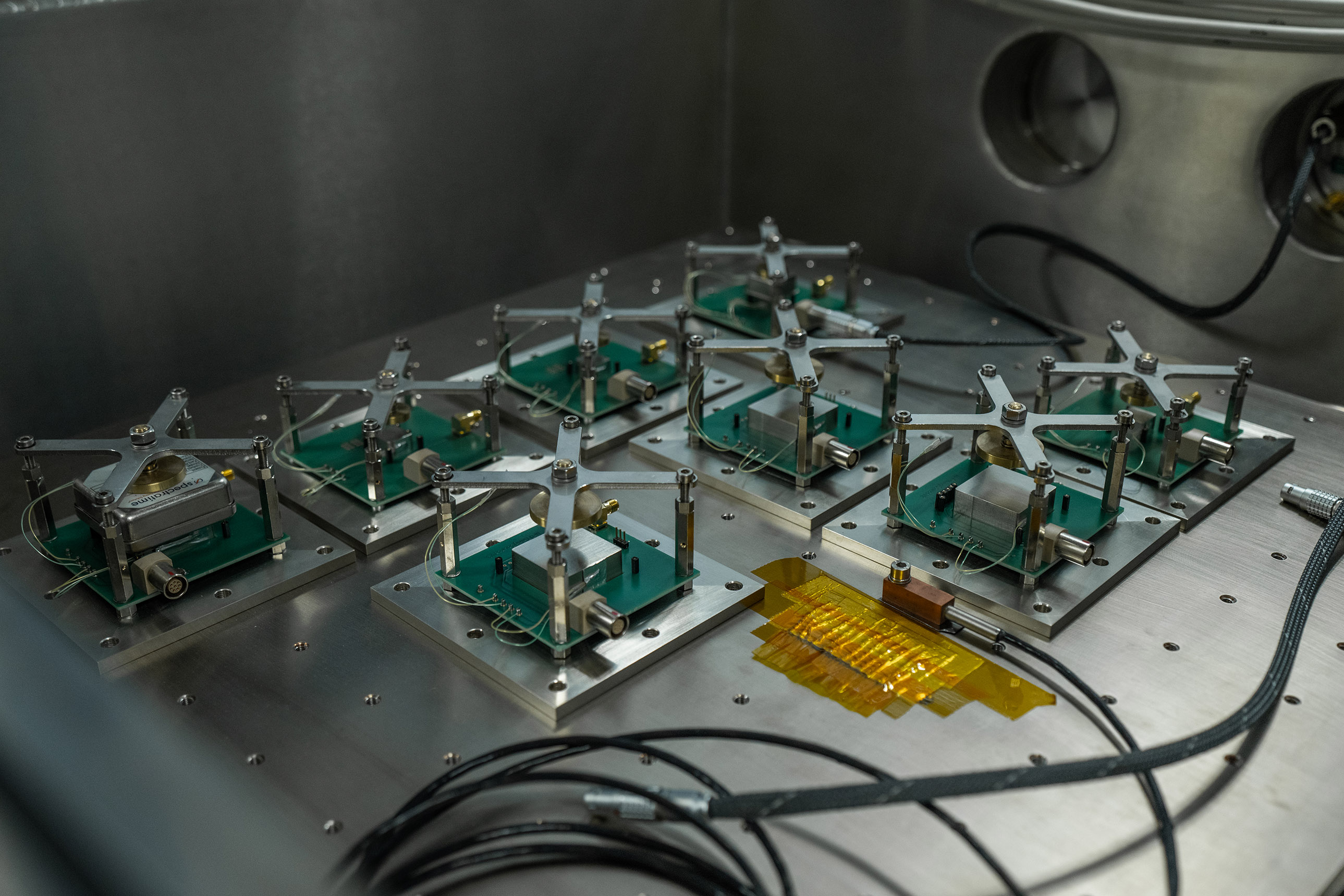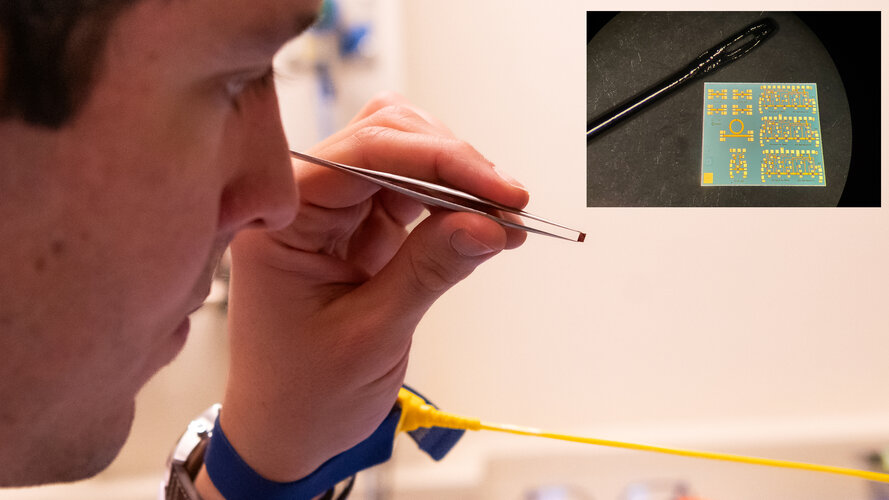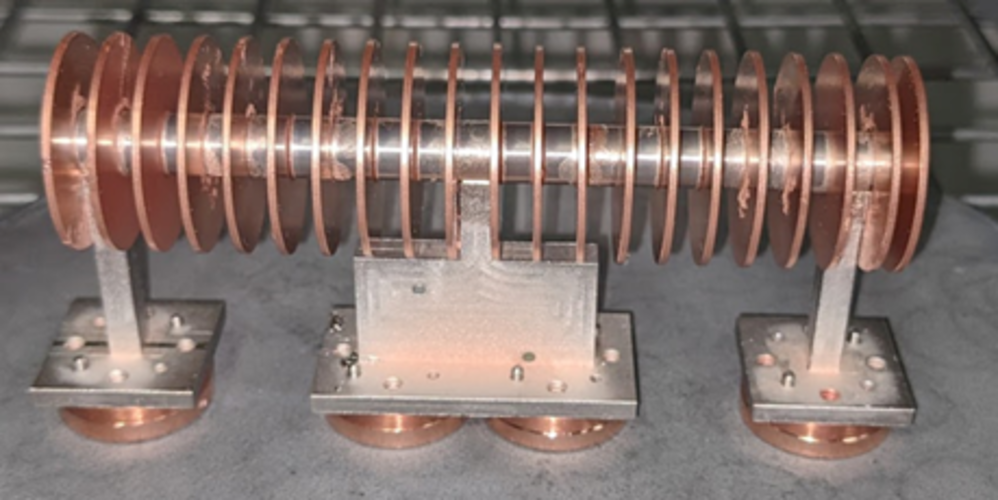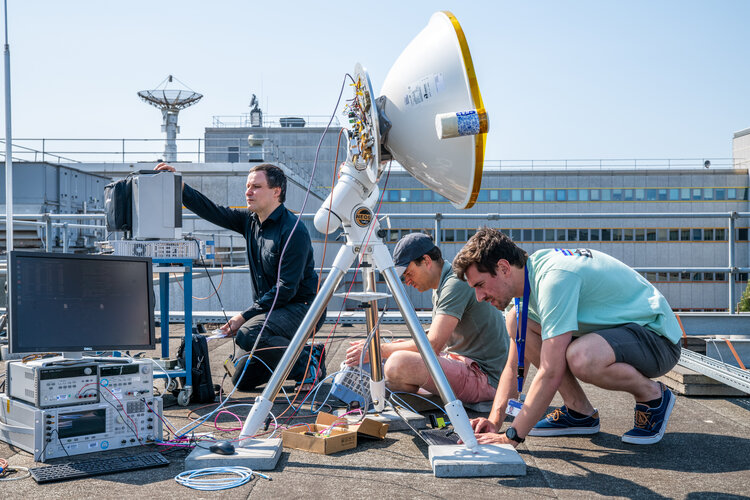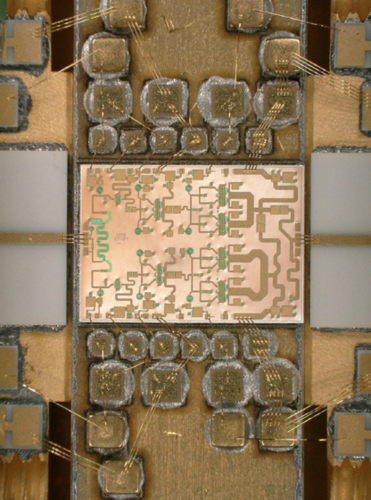Microwave Laboratory
The Microwave Laboratory is a group of world-class test facilities designed to support space activities in the fields of Radio Frequency Testing, Precision Time & Frequency, Radio Frequency Life Tests, GNSS Payload Testing and General Purpose RF Microwave testing up to 320 GHz. The laboratory has a combined floor area of over 200 m2 which includes four ISO 8 clean rooms. All facilities are equipped with state-of-the-art measurement systems and maintained to the very highest levels as demanded by the space industry. The laboratory is accredited to ISO9001 and staffed by a dedicated team of experienced engineers.
The lab supplies expertise to ESA and external partners by performing tests, analysis and characterisation of RF equipment and subsystems and performing research and prototyping at the beginning of a technology development, collectively applying expert knowledge and specialized RF equipment within the ESA-ESTEC premises. The Microwave laboratory performs tests using both customised and standard procedures.
LAB OVERVIEW
General Microwave Laboratory
The General Microwave laboratory has a wide range of Test & Measurement equipment and capabilities as summarised in the table below.
Table
MAIN PARAMETERS
Clean Rooms
Four ISO 8 (90 m2)
TVACs
6 Chambers (-60°C to +120°C)
Thermal Chambers
2 Chambers (-70°C to +180°C)
RF Generation
Up to 170 GHz
Spectral Analysis
Up to 320 GHz
Arbitrary Waveform Generation
16 bit, 1.28 GSa/s, 550 MHz BW; 14/12 bit, 8/12 GSa/s, 5 GHz BW
Vector Analysis
Coaxial, waveguide and on-wafer; 2-port up to 170 GHz; 4-port up to 50 GHz; Real-time error correction; Time Domain Analysis; Electronic and mechanical calibration capabilities
RF Oscilloscopes
Dual channel up to 50 GHz (oversample); 4 channel up to 13 GHz, 40 GSa/s
Noise Figure Measurements
Noise Figure meter up to 26 GHz; Noise Sources up to 170 GHz; Phase Noise 50 kHz to 1.6 GHz; NPR Test-bed, Ka-Band
Services
Testing
- Microvibration Test
- Performance Evaluation
- Qualification & Validation Tests
- Test Beds Development
- Life Testing
- Environmental Testing (For Instance, Thermal Cycling Tests, Thermal Vacuum Test, etc)
- Anomaly Investigations
- Characterisation
- Test methods development
Measurements
- RF Characterisation
Simulation
- RF Simulations
- Modelling
- Electric circuit simulation
- Magnetic simulation
Analysis
- RF, Electrical, Thermal Analysis Based on Acquired or Known Data
Technical Expertise
- Consultancy
- Training
- Ad hoc auditing
- Development of Space Standards
News from the Microwave Laboratory
UTC(ESTC), world best performing UTC realisation in October 2019
Thanks to the capabilities of and know-how acquired from the UTC facility, the local realization of UTC operated in the ESTEC Microwave Laboratory has been the best of all reported in the October 2019 Circular T.
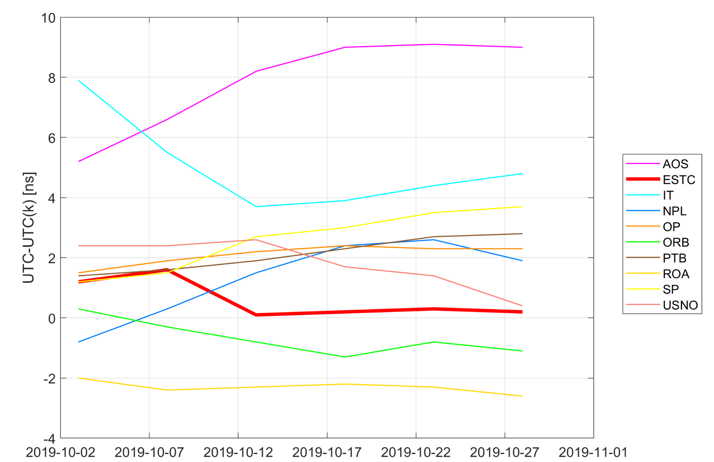
Visit us in the EuMW Exhibition
We are again present at the EuMW Exhibition this year. We will be promoting our laboratory capabilities as well as the different ESA R&D programmes. If you happen to be around Paris from 1st October to 3rd October you are invited to pay us a visit at Stand number 475.
More information about the EuMW and the Exhibition can be found in this link.
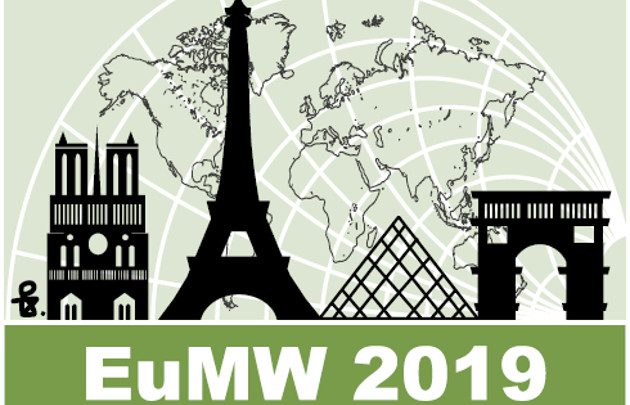
TESTS FOR THE EVENT HORIZON IMAGER
The Microwave Laboratory is currently supporting technology demonstration tests for the Event Horizon Imager mission concept. The Event Horizon Imager aims at providing a high resolution picture for the black hole’s event horizon shadow leveraging millimetre and sub-millimetre frequency observations from space. The laboratory test objective is to demonstrate the generation of coherent local oscillators at two satellites from their independent master oscillators, this which enables a two satellite system to perform space-to-space very long baseline interferometry. This technique avoids Earth atmospheric disturbances which make impossible any imaging from ground radio telescopes at such high frequencies.
Image credit: Radboud Universiteit Nijmegen
More information about Event Horizon Imager can be found here and a scientific paper can be found here .
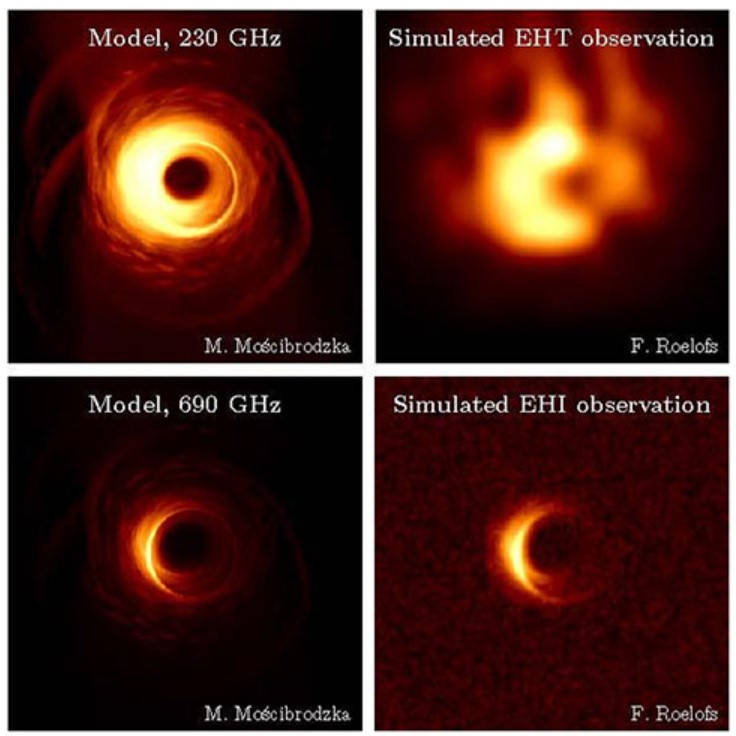
SUPPORTING JUICE ESA MISSION
The Microwave Laboratory has recently been involved in a test campaign of an Ultra Stable Oscillator in support for our JUICE ESA Mission.
JUICE – JUpiter ICy moons Explorer – is the first large-class mission in ESA’s Cosmic Vision 2015-2025 programme. Planned for launch in 2022 and arrival at Jupiter in 2029, it will spend at least three years making detailed observations of the giant gaseous planet Jupiter and three of its largest moons, Ganymede, Callisto and Europa.
More information about JUICE can be found here .
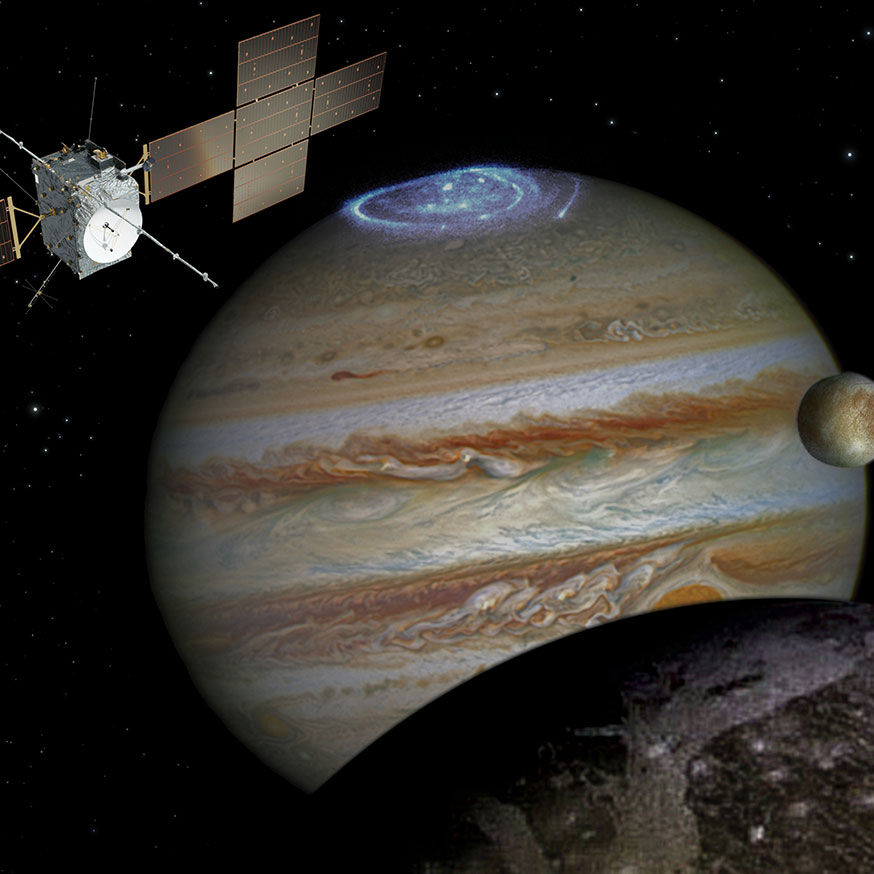
WE’RE SUPPORTING THE GALILEO PROGRAMME
Our laboratory, the Microwave Laboratory, has a long history of support to the Galileo programme. Currently we are running several test campaigns for them aiming at the improvement of both the next generation as well as the current generation performance at user level.
More information about Galileo can be found here
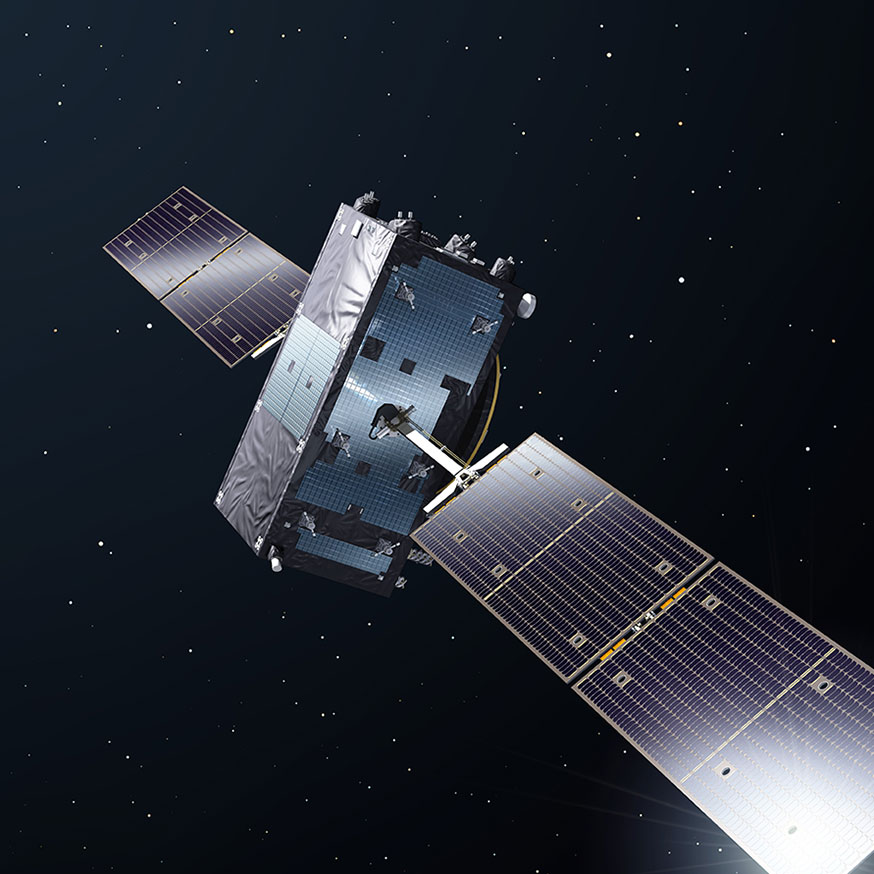
MetOp Second Generation
Apart from the experimental facilities we have also access to a wide range of specialized simulation tools. We have been using these tools extensively to support ESA missions, like the case with MetOp Second Generation where our experts have been modelling the high power RF performance of some elements of the satellite.
More information about MetOp Second Generation can be found here .
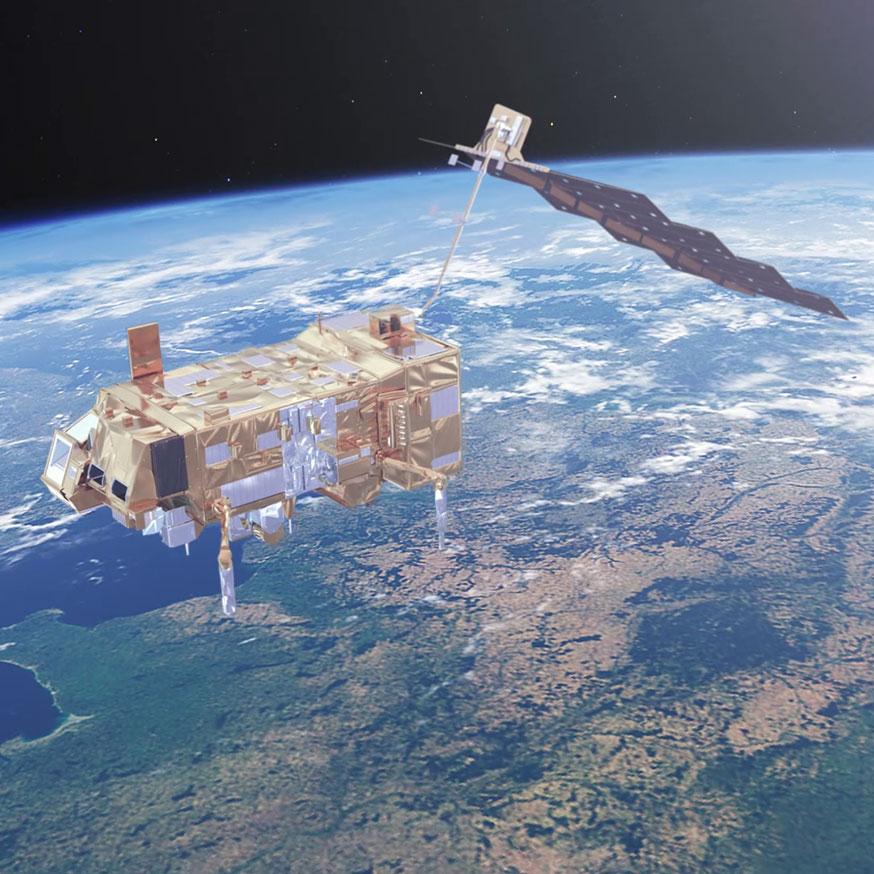
WE CAN HELP YOU GET THE BEST OUT OF OUR LABORATORIES
FOR FURTHER INFORMATION REGARDING THE ACCESS TO THE LABORATORY
Contact us via Email



